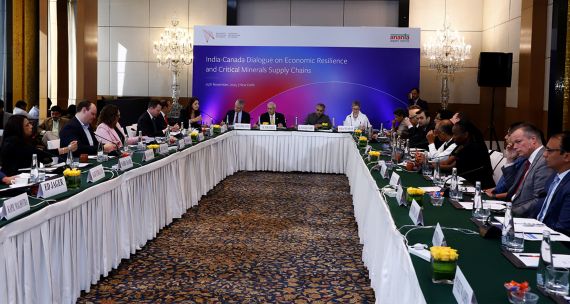For more than three decades, China has been the world’s preeminent manufacturing hub for myriad products, including smartphones, a major category of global trade and a sector enmeshed in a complex web of strategic industries like semiconductors. But in recent years, there has been a growing perception that China’s status as the world’s dominant smartphone manufacturer may be waning as multinational corporations seek to diversify their manufacturing footprints.
While there is evidence to support this contention, China’s position in global smartphone supply chains remains robust and resilient. China has not only preserved its dominance in higher-value core manufacturing but has also retained a significant influence in supply networks overseas, especially as Chinese companies establish production bases in emerging manufacturing hubs. To reduce the risks associated with a dependency on Chinese suppliers and manufacturers and their expanding production network beyond China’s borders, policymakers must gain a sophisticated appreciation of the intricacies involved in the entire supply chain across geographies.
Relocating away from China
Starting in the early 2010s, some multinationals began relocating aspects of their manufacturing away from China, primarily in response to rising labour costs. Over the past five years, there has been an acceleration of these efforts, especially as U.S.-China trade and geopolitical tensions have intensified. China’s stringent ‘zero-COVID’ lockdowns from 2020 to 2022 also created unprecedented trade barriers and an uncertain business environment, leaving many international firms feeling vulnerable to excessive reliance on a single country for their manufacturing.
China’s annual smartphone exports tell part of this story: they dropped from a peak of 1.3 billion units in 2015 to 822 million units in 2022. A 2023 S&P Global forecast predicts that China’s mobile phone production share could contract by five to 15 percentage points by 2025.
To fortify their supply chain resilience, corporations have moved some of this smartphone production capacity to countries considered more geopolitically stable, with India and Vietnam the biggest beneficiaries. The supplier list of Apple, the world’s No. 1 smartphone maker, illustrates this trend: its share of factories in China dropped from 40 per cent in 2012 to less than 30 per cent in 2022. Concurrently, the combined number of suppliers in India, Vietnam, and Thailand rose from three per cent a decade ago to around 10 per cent in 2022. Apple’s competitor, Samsung, has also pulled back from China, shedding 70 per cent of the employees from its Chinese production lines between 2013 and 2021 and closing its final full-blown Chinese smartphone plant in 2019. Vietnam is now Samsung’s manufacturing hub, producing more than 50 per cent of its smartphones.
But some core production capacity remains in China
While these outward relocation trends are clear, China’s central role in the global smartphone industry has proven resilient. China still produced more than one billion smartphones in 2022, roughly 70-80 per cent of the global total. Moreover, much of the capacity that has been redistributed to other countries has focused predominantly on lower-value final assembly. The higher-end core manufacturing stages, such as producing semiconductors, displays, and touch screens, have mostly remained within China.
For example, after shuttering its last smartphone plant in China, Samsung retained its semiconductor production, supplying chips for its smartphones in the Chinese cities of Xi’an, Tianjin, and Suzhou. Relocating these semiconductor manufacturing facilities seems unlikely in the short term, as it would take years and tens of billions of dollars to build new ones. Domestic suppliers in China – BOE tech, for instance – continue to capture 15.6 per cent ofSamsung’s supply chain, providing essential smartphone components, such as display panels, that are difficult for foreign firms to find substitutes given the Chinese suppliers’ advantages in market share, ownership of patents, and cost-effectiveness.
To date, no alternative manufacturing hub has matched China’s capacity, which spans almost the entire smartphone supply chain. With its skilled workforce, robust domestic supplier networks, and ever-more digitalized industrial infrastructure, China offers a 20-50 per cent annual cost savings compared to regional competitors.
Furthermore, these emerging manufacturing hubs in South and Southeast Asia still depend on Chinese suppliers and manufacturers for crucial parts. In 2023, China remained the top exporter of parts to Vietnam, with more than 90 per cent of the total value of imported “telephones and parts” coming from China. China is also the largest provider of electronics and parts for India, providing US$27.6 billion worth of electrical machinery and parts (which includes phones and their components) in 2023. And as of 2023, roughly 90 per cent of components feeding Tata Electronics, India’s sole homegrown iPhone assembler, originated from China. Indeed, both ‘Made in Vietnam’ and ‘Made in India’ mobile phones still substantially rely on imports from China.
Chinese manufacturers embedded in ‘friendshoring’ networks
Adding to the difficulties smartphone manufacturers face in disentangling their supply chains from China are the countervailing efforts underway by many Chinese firms to proactively establish new facilities in countries like Vietnam and India to continue effectively and economically supplying components for their clients. China’s penetration of ‘friendshoring’ networks (i.e. those among political and economic allies) suggests that simply diversifying away from China as a location will be insufficient to lessen the leverage Chinese firms increasingly exert in these integrated supply chains.
Vietnam, in particular, has emerged as a magnet for such outward Chinese investments. According to Vietnamese government data, registered capital influxes from China (including from Hong Kong) doubled in the first 11 months of 2022, compared to the same period in 2021, reaching US$8.2 billion. Chinese smartphone suppliers and manufacturers are among the major investors. For example, Luxshare-ICT, a smartphone accessories manufacturer, has poured US$600 million into Vietnam. By 2021, the company had six factories in Vietnam dedicated to supplying Apple. In 2022, another prominent Apple vendor, Goertek, made a US$306-million investment in Vietnam for acoustic components production.
India is another significant destination for these burgeoning Chinese capital inflows. By late 2020, some 250 Chinese smartphone supply chain factories had invested in India. Lingyi Itech, an Apple charger supplier, has been making strides since 2019, spending almost US$30 million to take over Lite-On-Mobile India, a manufacturer best known for its smartphone moulds, while also snapping up the Indian holdings of Salcomp, a Finnish corporation that designs phone chargers.
Chinese manufacturers’ entrenchment in friendshoring destinations is evident, even within Apple’s shifting supply chain geography. All of Apple’s Chinese suppliers operated domestically as of 2012, but by 2022, around 17 per cent of them (47 factories) were located overseas, predominantly in Vietnam and India. Of Apple’s 25 production partners in Vietnam, nine are Chinese, suggesting that dependence on China persists beneath the perception of diversification.
China buffered by domestic manufacturers’ prowess
In addition to preserving its central role in regional smartphone supply chains, China’s resilience is also boosted by the global ascent of its own mobile phone brands. The collective worldwide market share for Chinese smartphones rose from 40 per cent in 2017 to half of all sales in 2022, capturing an even greater portion in 2023. The latest industry shipment data reveal that eight of the top 10 players by volume are now Chinese, including Xiaomi, Vivo, Oppo, Huawei, and Transsion. These domestic powerhouses continue to make significant inroads, particularly in emerging markets. Transsion, a brand less familiar to Western consumers, has proliferated across Africa, the Middle East, and South Asia, delivering a 39 per cent year-on-year increase in shipments in 2023.
Furthermore, compared to their international competitors, Chinese smartphone brands have exceptionally high domestic sourcing rates. For example, Xiaomi’s latest smartphone 14 series consists of 75 per cent domestic components, with a few exceptions like advanced chips for memory storage. Huawei goes even further, with certain models featuring up to 90 per cent made-by-China components, spanning the spectrum from battery to chips, and accounting for 47 per cent of the phone’s total value. (In stark contrast, Apple’s iPhone integrates Chinese components that constitute about 25 per cent of its overall value.)
This symbiotic relationship between Chinese brands and domestic suppliers will help mitigate the risks to China associated with other countries’ strategies to diversify their global supply chains, reinforcing China’s pivotal position in the sector.
What does China’s resilience in the global smartphone supply chain mean for Canadian businesses and consumers? While China’s share of Canadian smartphone imports showed a slight dip in the past two years, from 78 per cent in 2022 to 77 per cent in 2023, it still towers above all other countries, underscoring Canada’s continued dependence on China’s entrenched manufacturing prowess and diversified supply chains. Moreover, as China continues to actively invest in production facilities worldwide, it will maintain significant leverage regardless of where the manufacturing takes place.
For Canadian policymakers, the message is clear: a comprehensive understanding of the extent of dependency on China for certain goods, such as smartphones, is crucial for developing effective strategies to mitigate supply chain risks. While sourcing from alternative manufacturing hubs can help address some vulnerabilities, policymakers must also acknowledge the immense challenges involved in fully de-risking from China, given its entrenched manufacturing prowess and the transnational production networks of Chinese companies. Instead of purely diversifying geographically, Canadian decision-makers should prioritize gathering granular intelligence on the entire supply chain to facilitate alternative strategies that further diminish risks.





